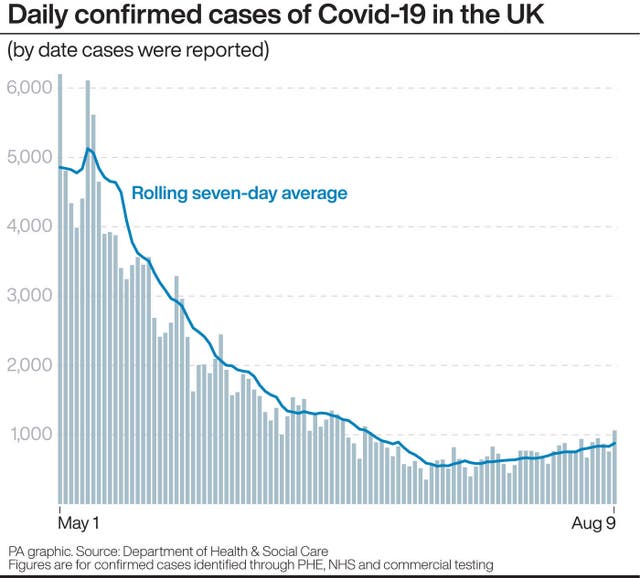‘Door knocks’ a possibility for Covid-19 contacts as 6,000 staff cut
Health officials in England have announced plans to strengthen regional test and trace powers.

People who have been in contact with confirmed coronavirus cases may get a knock on their door if tracers are unable to reach them over the phone.
Health officials have announced plans to strengthen regional test and trace powers in England, while 6,000 national contract tracers will be cut in a fortnight.
In pilot schemes, local authorities have been able to visit people at home where national contact tracers have been unable to reach them.
The changes come after criticism that the national system was not tapping into local knowledge.
Labour said the new plans showed that the system was nowhere near “world-beating” as the Government claims.
NHS Test and Trace will now provide local authorities across England with a dedicated team of contact tracers for local areas.
The Government announced plans to strengthen regional contact tracing so more people can be reached.
Officials said local areas will be given “ring-fenced teams from the national service”.
And if the dedicated national team cannot make contact with a person in a set amount of time, the local public health officials can use the data provided by NHS Test and Trace to follow up.

DHSC added that as the contact tracing system becomes “more locally targeted”, NHS Test and Trace will “will reduce current extra capacity and reduce the number of non-NHS call handlers”.
There has been criticism that some contact tracers have contacted just a handful of people.
But DHSC said staff numbers can “quickly scaled up, or down depending on requirements for the national service”.
Baroness Dido Harding executive chair of NHS Test and Trace said: “NHS Test and Trace is one of the largest contact tracing and testing systems anywhere in the world, and was built rapidly, drawing on the UK’s existing health protection networks, to stop the spread of coronavirus.
“At the height of the pandemic we ensured the system had extra capacity in place to cope with potential peaks in the virus.
“We have always been clear that NHS Test and Trace must be local by default and that we do not operate alone – we work with and through partners across the country.”
She added: “After successful trials in a small number of local areas, I am very pleased to announce that we are now offering this integrated localised approach to all local authorities to ensure we can reach more people in their communities and stop the spread of Covid-19.”

James Jamieson, chairman of the Local Government Association, said: “A strong national and local partnership is critical for test and trace to work as effectively as possible and it is right that local resources are kept under constant review to ensure everyone involved is able to help stop the virus spreading further.
“Using councils’ unrivalled local knowledge and vast experience of contact tracing within local public health teams is vital in the Government’s national efforts.”
Shadow health minister Justin Madders said: “Labour has been calling for a locally-led contact tracing system for months – it’s welcome that local authorities are now finally being given additional support to tackle the virus in their areas.
“But it’s clear Boris Johnson’s £10 billion centralised contact tracing system is nowhere near ‘world beating’ as he claims and the system is unable to fight local outbreaks successfully.
“A truly effective system would provide all local areas with detailed data sets, ensure people have support to self-isolate if needed, and give local health officials the help and resources they need to lead contact tracing. Ministers must get on – and implement this without delay – it is vital that we get contact tracing working properly.”
All the data from national and local teams will be fed into the same system, the Department of Health & Socal Care said.
It added the national service will be cut from 18,000 to 12,000 contact tracers on August 24 with remaining staff deployed as part of dedicated local tracers.

Meanwhile, Public Health England’s local health protection teams have doubled in size and will increase further ahead of winter, DHSC added.
It said there are 200 mobile testing units already in operation and over 200 walk-in centres will be opened across the country by October.
Keith Neal, emeritus professor in the epidemiology of infectious diseases at the University of Nottingham, said: “The biggest issue has been that 20-25% of cases have not been contactable. Allowing local authorities to chase up will ensure more are contacted.
“Visiting houses will help but there is no mention as to what they will do if they are not isolating for 10 days as they should be.
“The advantage of a national system is that it can divert resources to hotspots. In some places there are very few cases, others have many more, so there is likely to be a capacity issue in some areas.”





